Degas

Odd Man Out: Readings of the Work and Reputation of Edgar Degas
by Carol M. Armstrong
"A lucid and searching study. . . . Armstrong has produced one of the most elegant and persuasive examples of the historian's use of 19th-century art criticism. In the process, she has achieved a reading of the artist which makes a difference to the way we understand the difference of Degas himself."--Neil McWilliam, Times Higher Education Supplement

Degas (Artists in Focus)
by Jean Sutherland Boggs, Edgar Degas, Art Institute of Chicago, Susan F. Rossen (Editor)
The Art Institute of Chicago enjoys an almost unparalleled collection of works by Degas. Here, a selection of highlights enables renowned art historian Jean Sutherland Boggs to survey his career and trace his lifelong exploration of motifs and ideas. Painter and draftsman, graphic artist and sculptor, creator of some of the finest pastels of his time, there is no area of the fine arts that he did not master. 60 illustrations, 40 in full color.
Manet
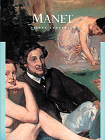
Edouard Manet
by Pierre Courthion, Edouard Manet

Manet and the Painters of Contemporary Life (World of Art)
by Alan Krell, Edouard Manet
Alan Krell examines the artist's known intentions and the critical, sometimes bitterly hostile reception that he encountered. He compares Manet to Impressionists like Monet, Degas and Morisot, and shows how the artist's progressive social views - on sexuality, on the position of women, on the family - were expressed through a style equally "modern," yet rooted in the European artistic tradition.
Michelangelo

Michelangelo (World of Art)
by Linda Murray
Contemporaries saw Michelangelo as the greatest artist of all times, recognizing in his creations an inspiration more divine than human. Today our appreciation of Michelangelo's sublime vision, and of his matchless gifts as sculptor, painter, architect and poet, has been strengthened and enriched by the perspective of four centuries. And Michelangelo himself has become the archetype of genius--dedicated, solitary, single-minded, tormented, harassed, unsatisfied and undefeated. In this lucid and authoritative survey, Linda Murray explores the political and religious context of his career, the recurring themes in the work, and the complex symbolism and iconography of his greatest masterpieces. 161 illus., 20 in color.
Mondrian
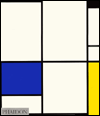
Mondrian
by John Milner, Piet Mondrian
Piet Mondrian, the painter of architectonic grids who seemed to reject nature, had early on steeped himself in the study of landscapes and flowers. His haunting pictures of farms, windmills and factories treat nature as a dynamic interplay of forces. Influenced by Helena Blavatsky's Theosophical movement, the fastidious Dutch artist of strict Calvinist upbringing turned to mystical introspection, producing symbolist images like Dying Sunflower (1908). After experimenting with pointillist color and spare seascapes, Mondrian, who believed he had been reincarnated many times, moved to Paris and discovered cubism, which helped him to depict the underlying rhythm and structure of what he saw. From there it seems but a hop to Broadway Boogie-Woogie (1943). Milner ( Vladimir Tatlin and the Russian Avant-Garde ) has produced a masterful account of Mondrian's artistic and spiritual growth, a marvelously illustrated monograph that gives us Mondrian whole--as mystic, philosopher and individualist. (Dec.)
Monet

Monet : Nature into Art
by John House
Monet expert House's fine account of the artist's career not only enchances our knowledge of Monet but furthers our understanding of Impressionist painting as well. In focusing on the evolution of Monet's technique, work methods, and marketing strategy, he demonstrates how the resulting art was based on continual experimentation and careful planning. This well-illustrated study examines Monet's concern with effects of light and atmospheric harmonies and his changing approach to contemporary problems. Other topics discussed include choice of subjects and development of series, pictorial composition, surface, color brush work, open air versus studio painting, and attitudes to and practice in finish and exhibition. The color plates are excellent, the black-and-white vary. Recommended. Robin Kaplan, M.L.S., The Information Group, Los Angeles
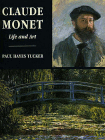
Claude Monet : Life and Art
by Paul Hayes Tucker
This lavishly illustrated book presents the first complete overview of the life, art, and times of the quintessential Impressionist. Tucker, one of our foremost authorities on Monet, offers a striking new view of the artist, showing him to be a far more complicated figure than previously acknowledged, fiercely competitive and ambitious, as well as sensitive and inventive.
Raphael
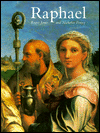
Raphael
by Roger Jones, Nicholas Penny (Contributor)
An excellent survey of the artist's career.
van Gogh
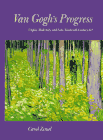
Van Gogh's Progress: Utopia, Modernity, and Late-Nineteenth-Century Art
by Carol M. Zemel
In Carol Zemel's insightful reinterpretation of Van Gogh's work and career, the artist is seen as a determined modern professional instead of the tortured romantic hero that leg has given us. Zemel's fresh approach emphasizes the utopian idealism that infused both Van Gogh's life and his pictures. She looks at the artist's career from 1882 to 1890 through six utopian projects or professional schemes, each embodying a specific societal crisis for Van Gogh's generation: women and sexuality, the rural artisan, republican citizenry, professional identity, the burgeoning art market, and the construction of a modern rural ideal. Zemel reveals how each eavor, as Van Gogh treated it, offered a vision of utopian possibility. She also analyzes broader historical problems encountered by all avant-garde artists of the late nineteenth century.
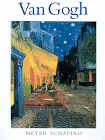
Vincent Van Gogh
by Meyer Schapiro
No other painter better embodies the idea of the tortured artist than Vincent van Gogh. Modern-art historian Meyer Schapiro recognizes this when he states that "what is most important is that van Gogh converted all this aspiration and anguish into his art, which thus became the first example of a truly personal art, art as a deeply lived means of spiritual deliverance or transformation of the self...." What naturally follows from Schapiro is not only a synopsis of van Gogh's artistic career and personal travails, but also an insightful analysis of van Gogh's technique and handling of paint, and how they manipulate the viewer's emotional response to his paintings.

At Eternity's Gate: The Spiritual Vision of Vincent Van Gogh
by Kathleen Powers Erickson/ Foreword by Martin E. Marty
This biography by Kathleen Powers Erickson is the first to demonstrate the falsehood of such assumptions and to argue that van Gogh's spiritual life was essential to the unfolding of his unique artistic vision. Basing her study on solid biographical evidence, van Gogh's personal correspondence, and informed insight into the painter's artistic imagery, Erickson clearly traces van Gogh's pilgrimage of faith, from his early religious training, through his evangelical missionary period, to his struggle with religion and modern thought, and finally to the synthesis of traditional Christian beliefs with the modern world-view that he achieved in both his life and his art.
|

















